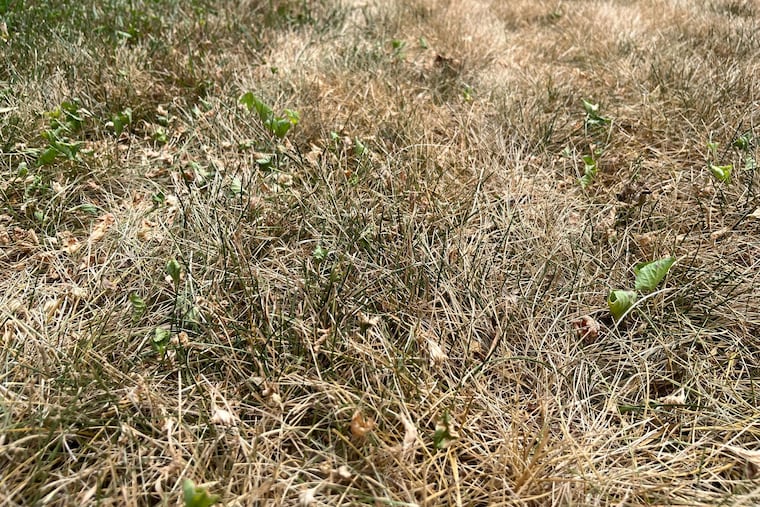N.J. declares drought watch and asks residents to conserve water. Pa. also dry
The state is seeing "significantly below-average rainfall," officials say, leading to diminished streamflow, reservoir, and groundwater levels.

Late summer and fall have been marked by a sunny tranquility — a boon for getting outside to walk, hike, run, or cycle.
But it’s come at a cost: A significant lack of rain combined with warmer-than-average temperatures the past three months has prompted New Jersey officials to declare a drought watch, and ask residents to voluntarily conserve water.
The most recent forecast for South Jersey contains no rain for the weekend or upcoming week, and much of Pennsylvania is also experiencing very dry conditions.
The drought watch announced Thursday in New Jersey is intended to increase public awareness as water levels in streams, reservoirs, and groundwater diminish. Groundwater is found underground in aquifers, which are cracks in spaces of soil, sand, and rock that collect and store water. If conditions don’t improve, a drought warning or drought emergency would be the next level, and possibly lead to mandatory restrictions.
» READ MORE: What Philly’s growing dry spell has to do with Hurricanes Milton and Helene
According to state officials, New Jersey has seen below-average precipitation during four of the last five months. Meanwhile, temperatures have remained above average over that period.
Rainfall is 2 inches to 7 inches below normal over the past 90 days in the state, depending on the location.
South Jersey has been driest with the most severe lack of rain in the coastal region. Some areas are 50% to 75% below normal the past 90 days. Atlantic County is 7.4 inches below normal, and Gloucester County is 6.8 inches below normal.
“On the heels of the third driest September since records commenced in 1895, virtually no precipitation has fallen across New Jersey during the first half of October,” State Climatologist David Robinson said in a statement. “With little rain expected for the second half, the potential exists for not only the driest October on record but perhaps the driest of any month.”
Shawn LaTourette, commissioner of the state Department of Environmental Protection, said voluntary restrictions can help avoid more serious measures in the future if conditions persist.
State officials say New Jersey is experiencing the impacts of climate change on water supplies. Recent years have shown a trend of increasingly intense rainfall events followed by periods of little or no rain. The increased uncertainty creates challenges for the water supply.
The last statewide drought emergency with mandatory water use restrictions was declared in March 2002, and was lifted in January 2003.
Drought-related declarations are based on a number of factors including precipitation, stream flow, reservoir and groundwater levels, as well as demand.
Officials are asking residents to minimize outdoor watering of plants and lawns. Excessive watering in fall can contribute to plant disease, they say. They also urge residents to use commercial car washes because they typically use water more efficiently.
They are also asking residents and businesses to use “common sense” in reducing indoor water use.
Though it may be dry also in Pennsylvania, officials there have not issued any drought declarations. Like New Jersey, the state’s Department of Environmental Protection uses various indicators including stream flow, groundwater level, precipitation, and soil moisture. The DEP would only make a drought declaration after monitoring showed departures from normal ranges over a period of 3-12 months. It also considers information from public water suppliers.
However, the U.S. Drought Monitor map, produced by the National Drought Mitigation Center at the University of Nebraska-Lincoln, the National Oceanic and Atmospheric Administration, and U.S. Department of Agriculture, shows drought conditions throughout the area.
It shows all of South Jersey in at least a moderate drought, with much of Ocean, Burlington, and Atlantic counties in a severe drought.
And it shows Southeastern Pennsylvania in a drought. In fact, it’s dry enough that the Pennsylvania Department of Conservation and Natural Resources (DCNR) said Friday it would not conduct its semiannual November whitewater release from Lake Nockamixon into Tohickon Creek due to low water levels. The DCNR said the lake is a foot below what’s needed for a release, and that there is no rain in the 10-day forecast.